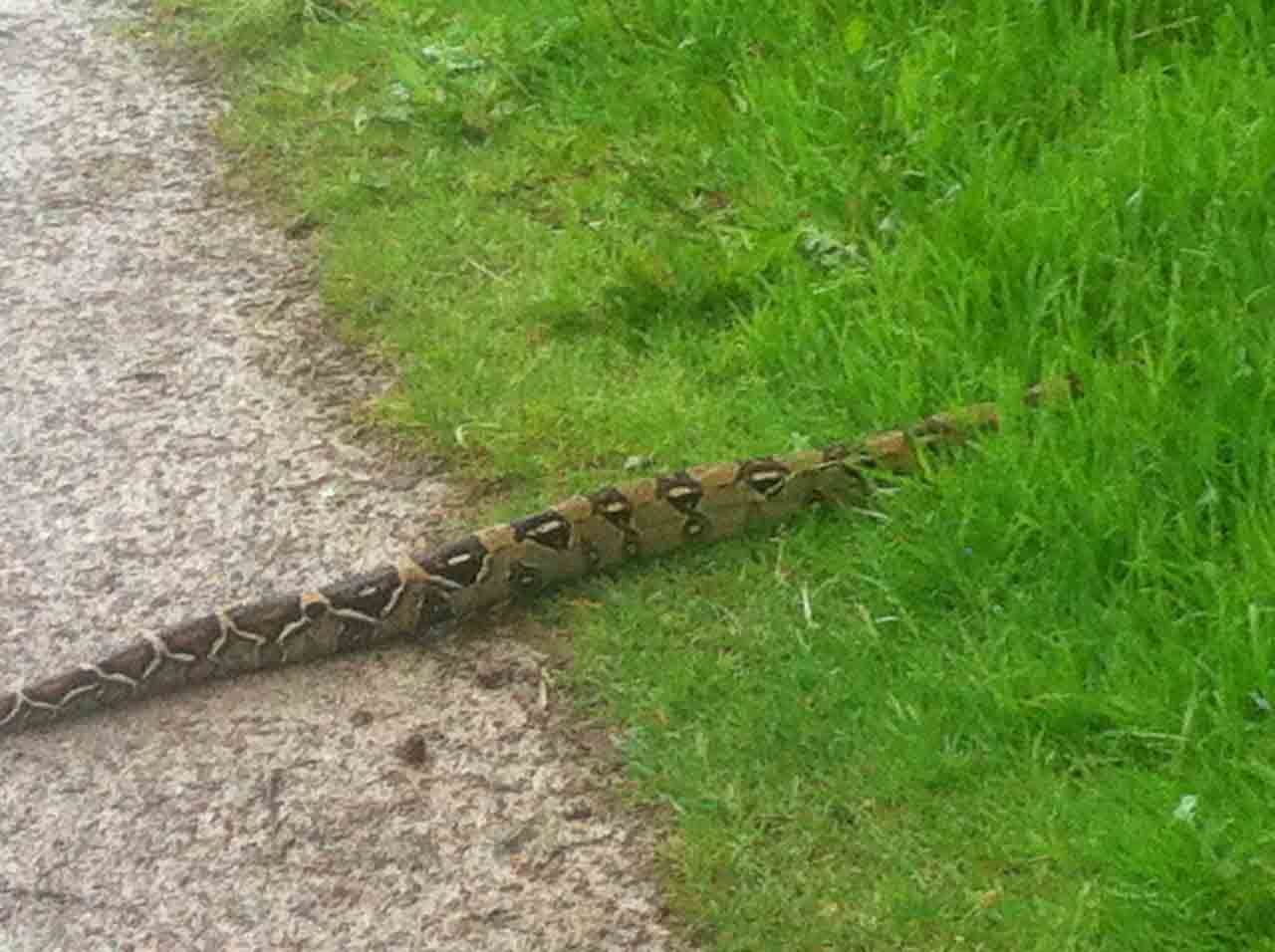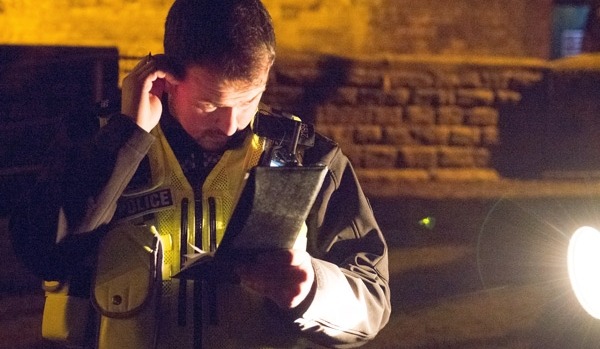Yorkshire Water is urging visitors to its popular Swinsty reservoir site near Harrogate to exercise caution and keep their dogs on a lead when walking around the site, after the sighting of what experts believe to be a pet boa constrictor at the beauty spot last Saturday

The snake, which is not a native species in the UK, is believed to be someone’s pet which has either escaped or been abandoned there by an owner who was no longer able to look after it.
It was spotted at the site last Saturday at around 6pm by Otley man Ed Ryder who stumbled upon it whilst walking around the site with his girlfriend.
Surprised at seeing the tail-end of what appeared to be an unusual looking snake poking out onto the path, Ed managed to capture a photo of the serpent before it calmly slithered out of sight and into the undergrowth.
At first, he presumed it was a large adder but curiosity drove Ed to seek expert opinion, with the Yorkshire Naturalists Union confirming that it is in fact a boa constrictor measuring around six feet.
Ed, of Biskit Marketing, comments:
I’m not fond of snakes at all, I didn’t even like my Grandma’s snake draught excluder. I enjoy running around Swinsty, and I have been wondering how to get my speed up – I don’t have to worry now.
Commonly found in North, Central, and South America – but legally kept by some people in the UK as a pet – the boa constrictor is a large snake which can grow up to 12 feet in size and recognisable by its brown colour with distinctive brown or reddish brown patterns. At home in forests and woodland, it is able to climb into trees and shrubs to forage for prey which includes a wide variety of mammals and birds, such as mice, bats, and amphibians.
As a nocturnal animal, it normally hunts in the dark, first striking at its prey and then asphyxiating them by wrapping their bodies around them and crushing the life out of them, before consuming their prey whole. Young boa constrictors need to be fed once a week, but older snakes can go without food for up to a month – but after between three and four weeks they will want to feed.
As a cold-blooded reptile, the boa constrictor needs warmth to sustain it (temperatures of between 75 – 85f) and as such is unlikely to survive for long in the UK climate.
Geoff Lomas, site manager for Yorkshire Water, comments:
Over the years, we’ve discovered a number of escaped or unwanted exotic pets at our recreational sites across the region, such as terrapins and coi carp, but never an exotic snake more commonly found in the jungles of South America.
Clearly there is some concern in that we have a snake, of which we know very little about, including when it last ate, on the loose in a vast woodland area which is very popular with visitors from across the region.
Whilst a boa constrictor is unlikely to pose a risk to humans, a lot of people walk their dogs around the site and clearly small dogs could be at a small risk from such a predator.
With this in mind, we’re saying to people, please do come to the site, but please be sensible and exercise caution when out and about, ensuring all dogs are kept on a lead.
If you do spot the snake, please let us, the police or the RSPCA know as quickly as possible, and every attempt will be made to safely capture the snake and hopefully return it to its owner.
North Yorkshire police, the RSPCA and Yorkshire Naturalist Union have all been informed about the snake, with Yorkshire Water urging anyone in the area who has lost a boa constrictor to get in touch as soon as possible. Yorkshire Water has also put up a poster at the site detailing the sighting and urging people to exercise caution when exploring the beauty spot. If you do see the snake, please contact the RSPCA as soon as possible.







Snakes.
Why did it have to be snakes?
;)
HgM